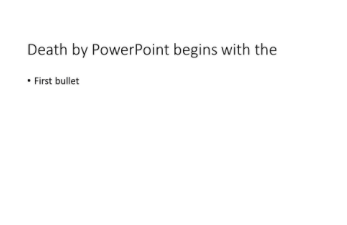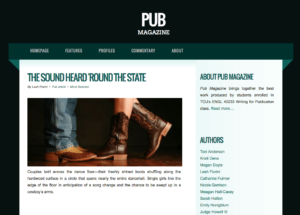Teaching Digital Writing
- What kinds of digital writing do you do?
- Why do/teach digital writing?
According to the MISD curriculum pages for English/ Language Arts/ Reading, students are to create and deliver multimedia presentations by the end of the year. Likewise, “media literacy” is one of the ongoing skills to be learned by your students.

- You could teach PowerPoint.
- You could also try blogging or writing for the web.
What’s blogging about?
Blogging makes the social reality of writing real.
Before Google took over the Blogger.com online platform, the site defined blogging this way:
A blog is a personal diary. A daily pulpit. A collaborative space. A political soapbox. A breaking news outlet. A collection of links. Your own private thoughts. Memos to the world. Your blog is whatever you want it to be. There are millions of them, in all shapes and sizes, and there are no real rules.
In simple terms, a blog is a website, where you write stuff on an ongoing basis. New stuff shows up at the top, so your visitors can read what’s new. Then they comment on it or link to it or email you. Or not.
New blogging tools and sites are cropping up every day, but some tried and true favorites we use in the Studio regularly include: Weebly, Wix, and WordPress. The costs associated with blogging can be minimal or completely free if you don’t select a more advanced theme or personal URL domain name.
Today we’ll be showing you Blogger.
What could this become?
There are plenty of recreational blogs to be emulated. Check out: The Daring English Teacher, Three Teachers Talk, or The Write Conversation, but you could also develop a blog as a professional portfolio, too. Check out the examples below.

Creator: Angela R. Sowa
This digital portfolio was created by Sowa for the English Graduate Instructor of the Year Award. Click the image to visit her site.
For your classroom, imagine what your students could do when you read through these examples.

Creator: Katie Bryant, student in Jackie’s Spring 2015 Yoga-Zen Writing class.
Students create 350-500 word blog “asanas” exploring an issue/ idea by posturing their thoughts in relation to an issue/ idea. By engaging in regular writing practice, we: 1) prepare for class discussion, 2) generate ideas for writing through analytical thinking, and 3) practice analytical writing common in college academic writing.

Creator: Students in the Spring 2012 Writing for Publication course.
This online magazine was created by students in Dr. Carrie Leverenz’s English 40233 (Writing for Publication) course. Click the image to visit the site.
Activity: Analyzing Blog Style
Read the following blog about blogging: “Blogging in the 21st Century Classroom” Edutopia, April 8, 2013. In teams, discuss how blog writing is similar to and different from traditional essay writing. How could we use blog writing to meet learning outcomes in our classes?
Kinds of Education Blogs:
- The Teacher Blog
- The Class Blog (using Edublog)
- The Student Blog
Activity: Hands-on Practice
Choose one of the following activities. We’ll share your progress at the end of our work time.
- Practice your hand at drafting a blog post. While you may choose to write about teaching or writing or using technology, feel free to choose any subject that interests you and that you think is likely to interest readers. Try to use conventions of blog writing and blog design to enhance your message.
- Use Blogger to create a blog that you might use personally or with one of your classes. If time permits, write the intro post explaining the purpose/subject of the blog for readers. See directions for getting started with Blogger here.
- Create a blog assignment for one of your classes. Identify learning outcomes and note how blog writing can help meet those learning outcomes. Find relevant examples/ Create evaluation rubrics.
- Revise the writing assignment you brought with you. Add learning outcomes related to digital literacy/multimodal composing. Include relevant digital tools/strategies. Look for relevant examples. Create evaluation rubrics.
***You’re encouraged to share and get feedback from anyone in the cohort on any of these activities. Let workshop leaders know if you need or want help.
Final Reflection
- What one thing will you remember/take away from the workshop today?
- Revisit your goals from the beginning of the workshop. New set a goal for this semester: what one thing do you want to learn to do or teach your students to do?
- Copy and paste your semester goal into our shared Google Doc. Be sure to add your name and school.
- What kinds of continued support do you think you will need to reach your goal?
- Finally, please take our exit survey.